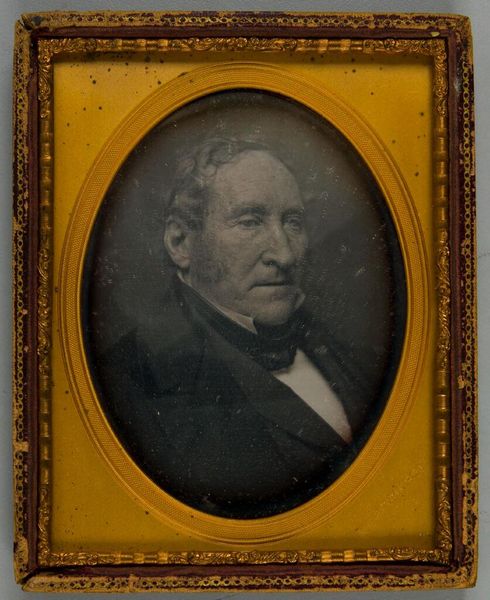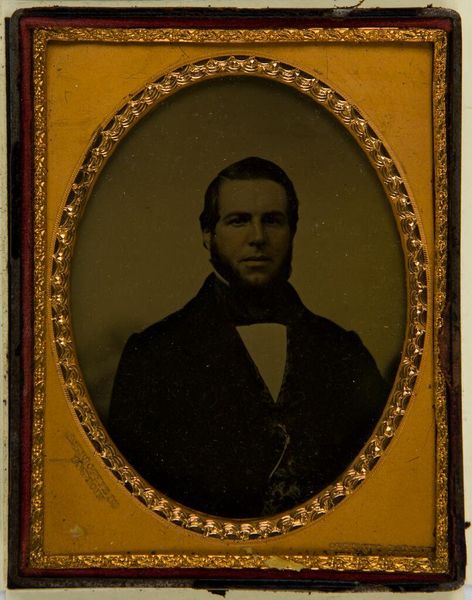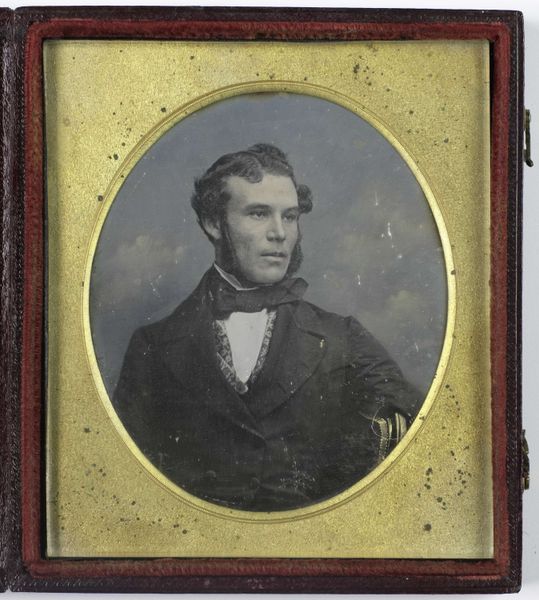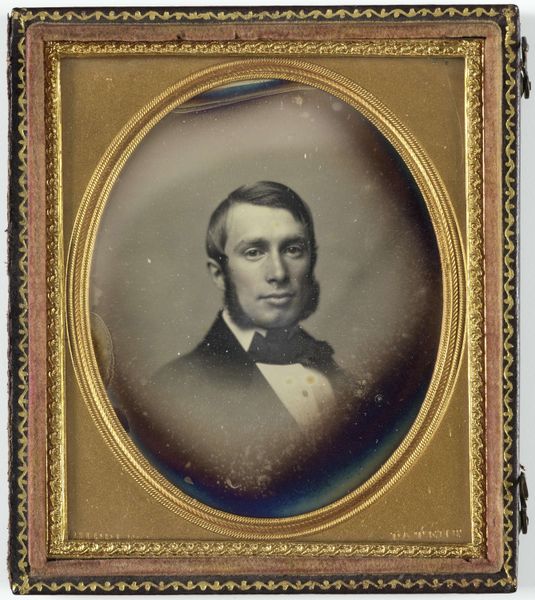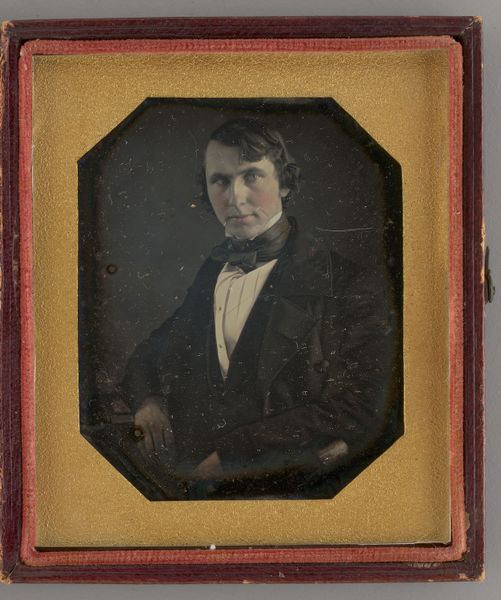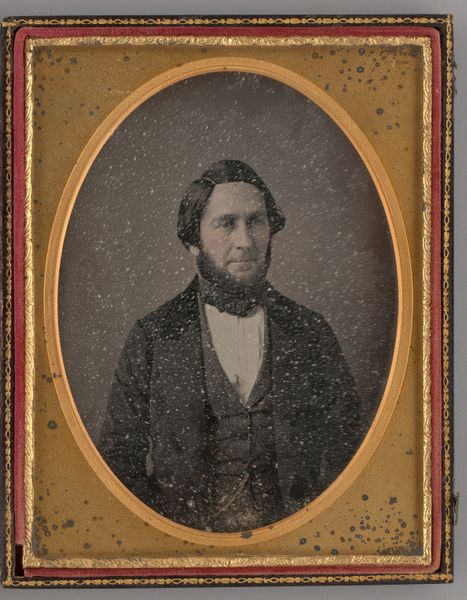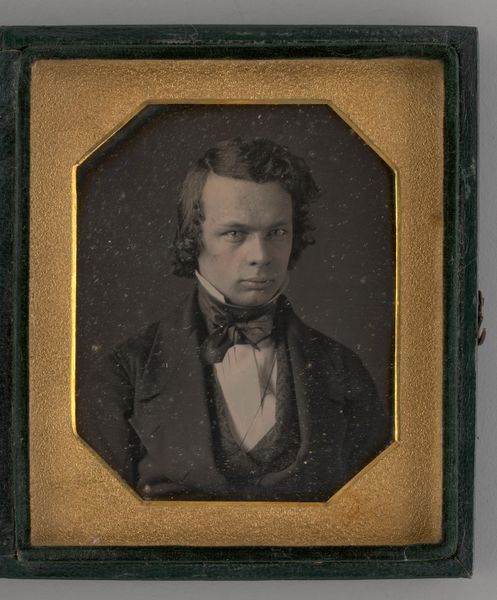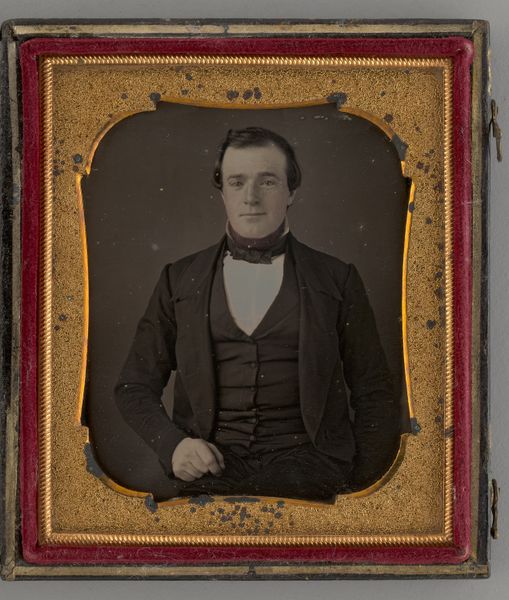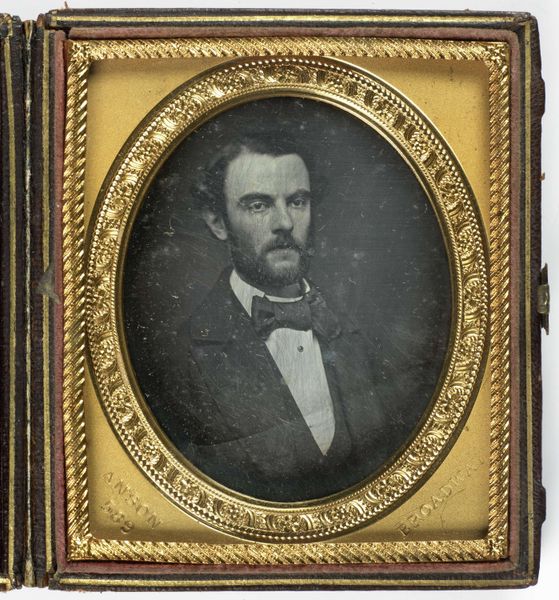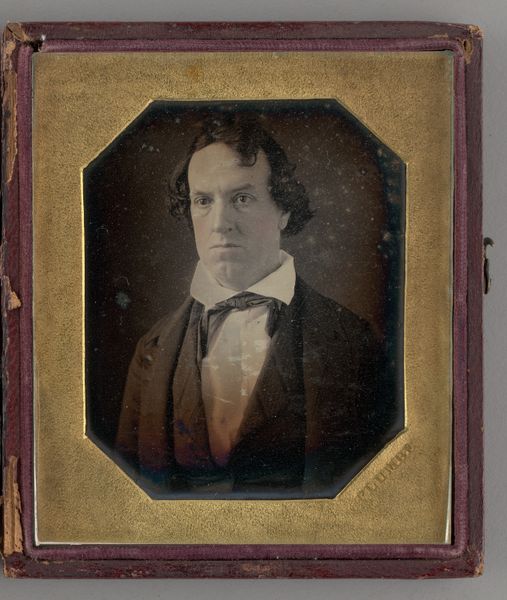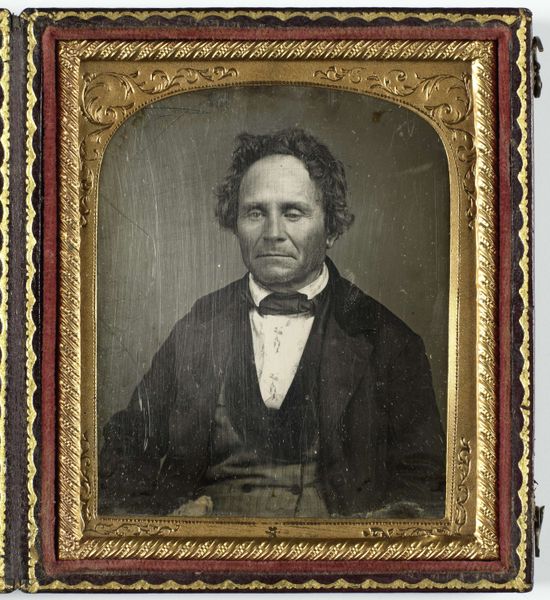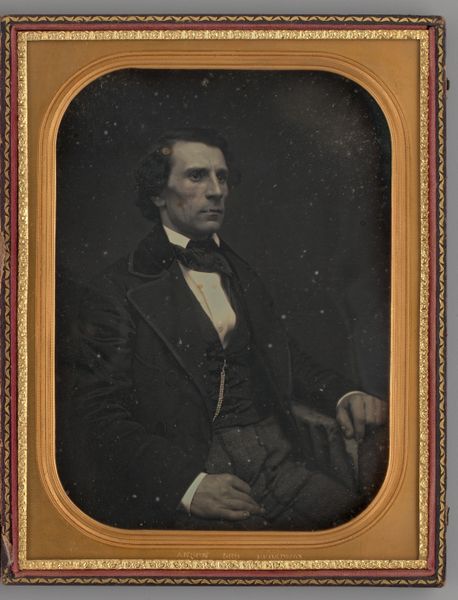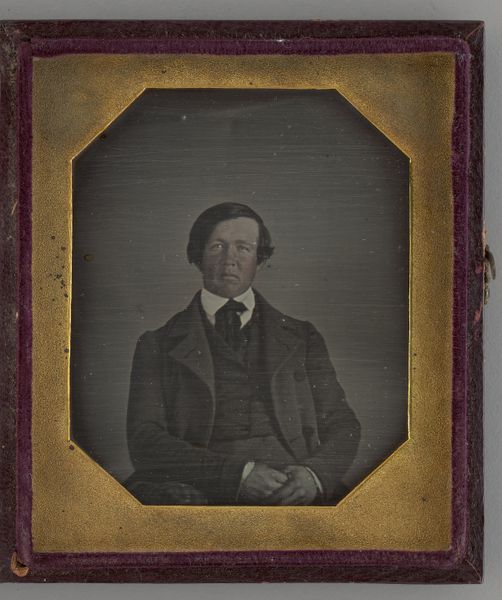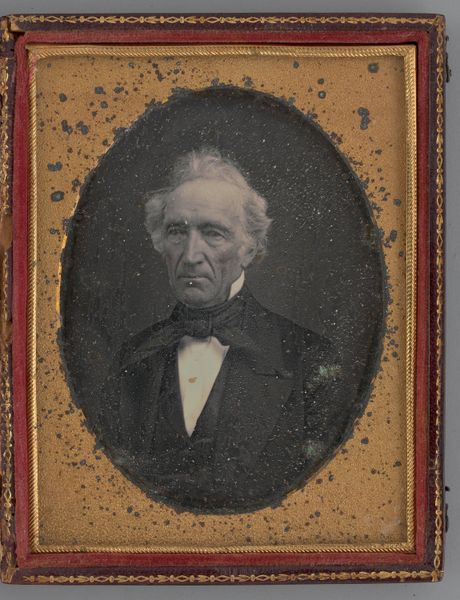
daguerreotype, photography
#
portrait
#
daguerreotype
#
photography
#
romanticism
Dimensions: height 50 mm, width 39 mm, height 59 mm, width 70 mm, thickness 11 mm
Copyright: Rijks Museum: Open Domain
Curator: We're looking at a portrait of an unknown man, made sometime between 1841 and 1850. It's a daguerreotype, likely created by Richard Beard. Editor: What strikes me first is the incredible formality, almost severity. He looks incredibly self-conscious, doesn't he? A bit like he’s posing for a stamp! Curator: Early photography demanded such stillness. It speaks volumes about how people wanted to present themselves. Look at the dark suit and meticulously tied cravat— symbols of respectability. Editor: Indeed. Black was always a sombre hue, though during the 19th century it also signified status and modernity. In this romantic style you’ll notice those dreamy, slightly unfocused edges to the frame, almost blurring reality as we look back into it! The rosy cheeks create such an emotive depth. I would speculate a certain melancholia? Curator: You can read melancholy into it, certainly, but consider the technical constraints. Daguerreotypes, with their silvered copper plates, rendered blues poorly, hence the absence of vibrant colours. The faint rosiness might simply be a trick of the lighting and early color manipulation, a signifier of good health and status, of course. Think about the absent smiles, too - the portrait served more of a commemoration of what that face represented. Editor: True, those romantic depictions of humanity were idealized in a more dignified style. Despite the constraints, this image pulsates with longing. Knowing so little about him gives him an immortal identity to me. Almost every one of these daguerreotypes are a sort of melancholic relic. Curator: Well, for me, it becomes about contemplating those formal boundaries against what’s hidden behind them. Who was he outside that fleeting moment? Did he actually approve of black or did his identity lay somewhere underneath? It invites this intriguing inner dialogue within the visual space. Editor: Absolutely, the unknown invites imagination. In many ways it holds a richer tale now, through our speculation, than the truth of who he was back then, as he posed stoically for the camera.
Comments
No comments
Be the first to comment and join the conversation on the ultimate creative platform.
